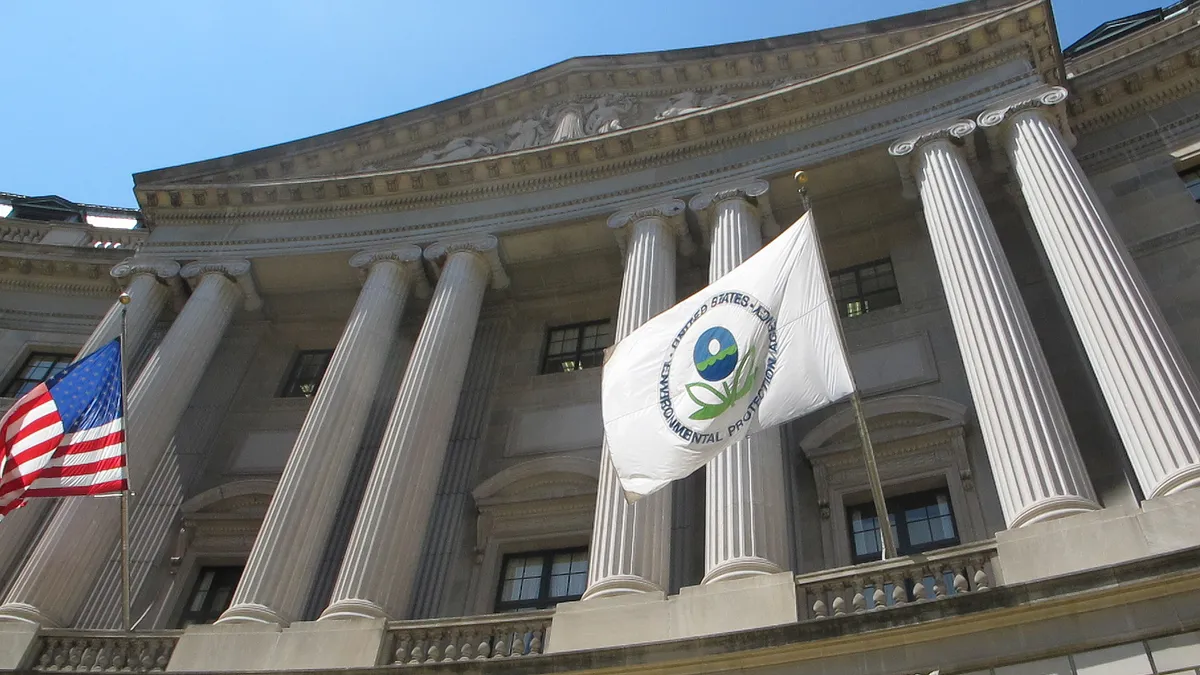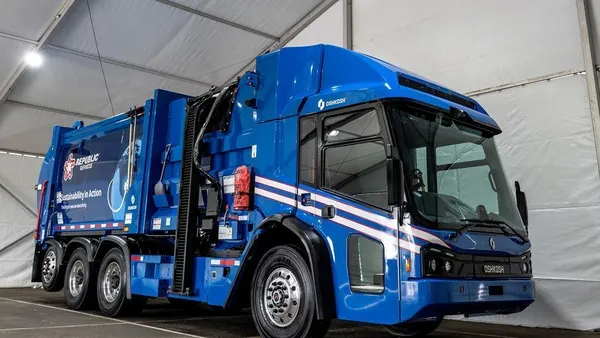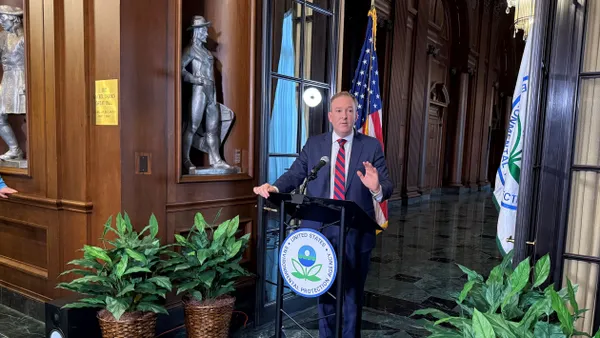UPDATE: September 18, 2019: Attorneys general from eight states, along with the Environmental Defense Fund, recently filed a motion calling on Judge Haywood Gilliam to deny the EPA's delay request for finalization of a federal landfill emissions plan.
"EPA argues that an administrative agency may effectively withdraw a court’s authority to enforce a final judgment merely by altering applicable regulations ... No court has so held, and EPA’s sweeping theory would open the door to serial abuses of judicial and administrative processes by dilatory federal agencies," reads the Sept. 16 brief.
The motion outlines why this move would likely be an unprecedented reprieve from federal court judgment and could unduly delay relief from the effects of landfill emissions. According to the group, only a handful of states have still submitted plans – meaning a federal plan would be required to cover the rest. Last week, New Mexico's plan became the most recent to receive EPA approval.
Dive Brief:
- The EPA recently issued a final rule making today the deadline for states to submit compliance plans for the 2016 Emissions Guidelines (EG) landfill rule. So far, the EPA has received, and proposed to largely approve, plans from various agencies in five states.
- The EPA also recently published a proposed rule to create a federal plan for state or tribal governments that haven't submitted their plans. This was mandated by a California federal judge in May, following a lawsuit from multiple state attorneys general over the federal agency's delayed action.
- At the same time, federal lawyers filed a motion Monday asking the judge to vacate an existing order that obligates EPA to promulgate regulations for a federal plan by Nov. 6. The government argues the revised state plan submission deadline means it now has until Aug. 30, 2021 to issue that plan.
Dive Insight:
This issue continues to be one of the most high-profile federal regulatory fights affecting the waste industry. Initiated by the Obama administration as part of a push to reduce methane emissions that contribute to climate change, the regulations have been treated with far less enthusiasm in the Trump era.
The 2016 rule applies to any MSW landfill that accepted waste after Nov. 8, 1987 and commenced construction on or before July 17, 2014. According to the EPA's new federal plan proposal, this includes more than 1,900 sites in all 50 states, Puerto Rico and the U.S. Virgin Islands. The action was paired with 2016 New Source Performance Standards (NSPS) for landfills that commenced "construction, reconstruction, or modification" after July 17, 2014.
Per one of the EPA's latest publications, the NSPS and EG "are based on the Administrator's determination that MSW landfills cause, or contribute significantly to, air pollution that may reasonably be anticipated to endanger public health or welfare."
The industry – led by NWRA, SWANA, Waste Management and Republic Services – sought to challenge the NSPS and EG rules in court in 2016. Those efforts were rewarded in May 2017, when then-EPA Administrator Scott Pruitt granted a 90-day administrative stay on submitting state plans. Shortly after, the agency successfully moved to put the industry court case in abeyance pending resolution.
The EPA let the stay expire in August of that year with no action and confirmed to Waste Dive exclusively in October it would not be sanctioning states that hadn't submitted EG plans.
Further back-and-forth eventually led to a 2018 lawsuit filed by multiple state attorneys general – and since joined by groups such as the Environmental Defense Fund – that ended up before Judge Haywood Gilliam in California. The judge's May ruling was viewed as a victory by those parties, and a setback for the deregulatory agenda advanced by Trump's EPA.
Amid all of this, EG compliance plans have still come in from Arizona, California, Delaware, New Mexico and West Virginia. Others have remained in limbo, unsure about whether to submit their own plans or wait for a future federal plan. The topic of regulatory uncertainty has also come up at numerous industry conferences in recent years, with varying degrees of resistance or confusion about how landfill operators themselves should proceed.
As it stands now, the EPA's agreement to finally enforce a deadline for state plan submissions could be viewed as minor – albeit long-delayed – progress for supporters of the regulation. The accompanying decision to take two years to determine whether states have failed to submit plans, via a parallel regulatory move, is likely seen as less welcome.
Based on past actions, state and environmental groups can be expected to challenge the agency's interpretation that it now has two years to issue a federal plan of any kind. Unless Judge Gilliam decides to reverse his own deadline – one which EPA has recognized by already filing, as a precaution, the proposed rule for such a plan – the Nov. 6 requirement will stand.














